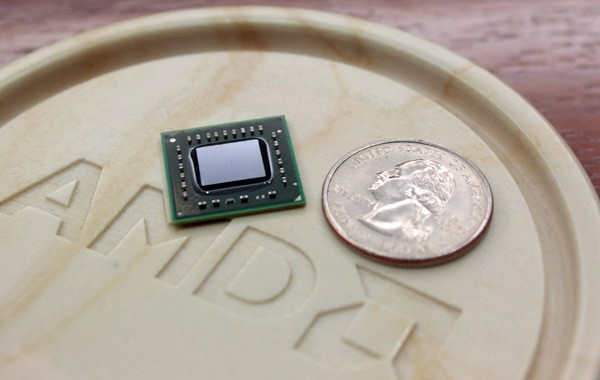
Chipmaker AMD has launched new entries in its Fusion A-series of Accelerated Processing Units (APUs) for both desktop and notebook computers. In addition to sporting two to four cores and bringing improved graphics performance when paired with select AMD Radeon HD 6500-series video cards, AMD is offering its first unlocked desktop APUs, enabling hobbyists and enthusiasts to overlock both the x86 cores of the processors as well as the APU’s graphics components.
AMD is touting the new video and graphics capabilities of the new chips, claiming they have up to 144 percent faster video performance when paired with selected AMD Radeon HD 6500 video cards. The new chips also offer AMD Video Steady, which is designed to stabilize video during playback: instead of jumpy or unsteady video content, videos will look stable and smooth—we’re not sure how much of a problem this is for everyday people, but apparently AMD felt strongly enough about it to back support into its processors. The chips also use AMD Vision Engine software, which AMD has been regularly updating to offer new features and enhancements.
Most exciting to games and high-performance computing fans, AMD is offering two unlocked desktop versions of the new chips, the $135 A8-3870k and the $115 A6-3620K quad-core processors. The 3870K sports 4 MB of L2 cache, four CPU cores and running at a base speed of 3.0 GHz, and 400 Radeon cores run at 600 MHz—the 3670K steps down to a base speed of 2.7 GHz and 320 Radeon cores. Both can be overclocked to add up to 500 MHz to the CPU and another 200 MHz to the GPU—assuming folks have the power supplies and cooling to make it happen. Both consume 100 Watts.
In all, the new A-series offering span five desktop processors (all but one are quad-core) and eight notebook processors (evenly split between dual-core and quad-core). Systems based on the new chips should reach the market in early 2012, and the new chips are available now from retailers like iBuyPower, Cyberpower, Newegg, and NCIX.
Editors' Recommendations
- AMD’s upcoming APUs might destroy your GPU
- AMD’s new CPU slammed as ‘anti-consumer at best’
- AMD just announced the graphics card everyone has been waiting for
- AMD might have a new graphics card next month, too
- AMD’s new Ryzen 8040 CPUs aren’t all that new



